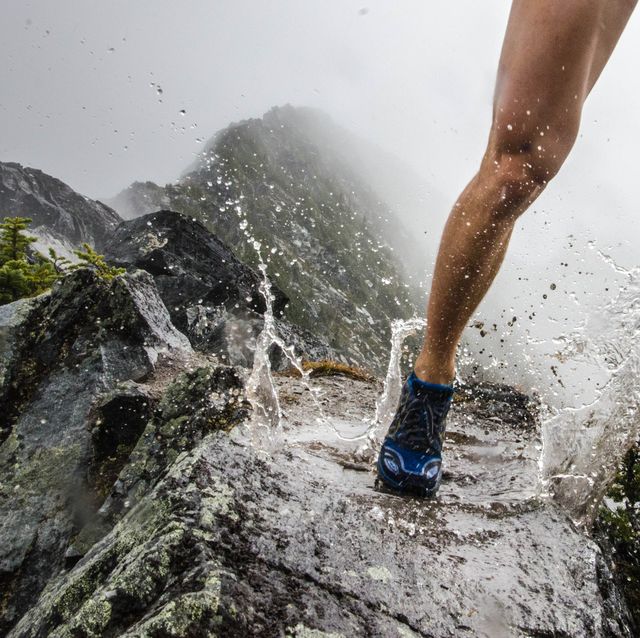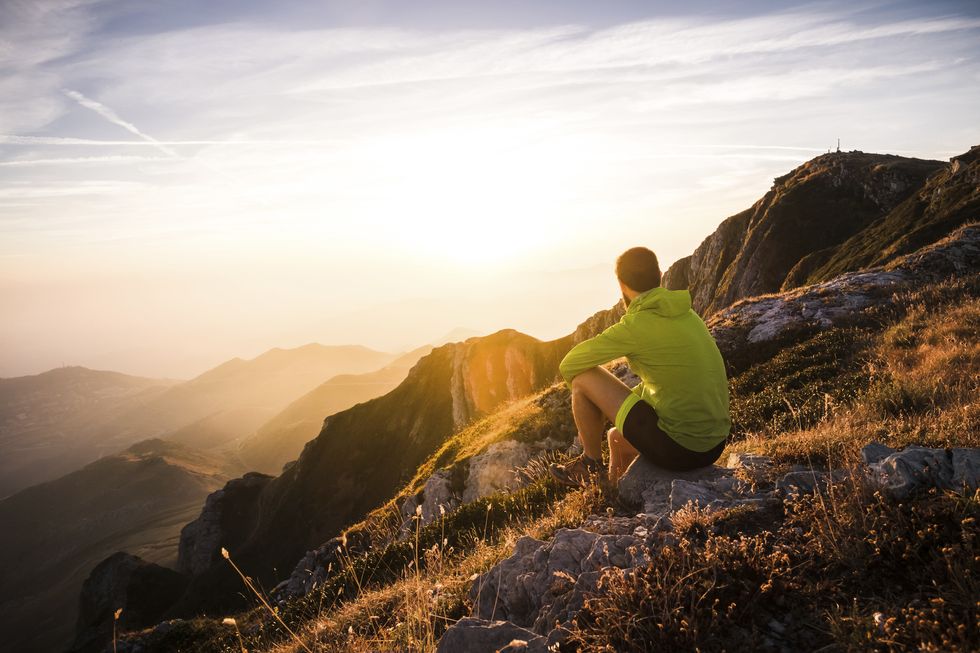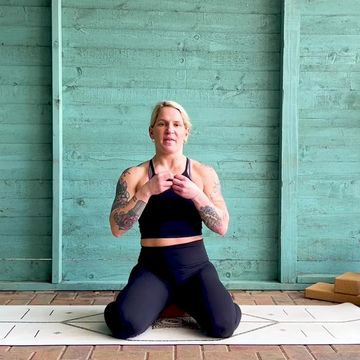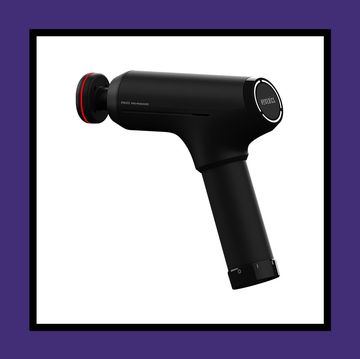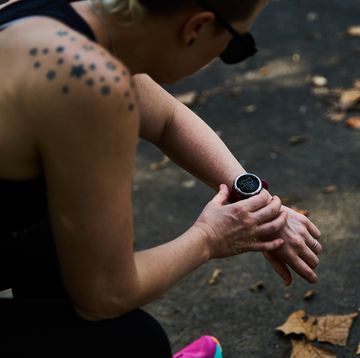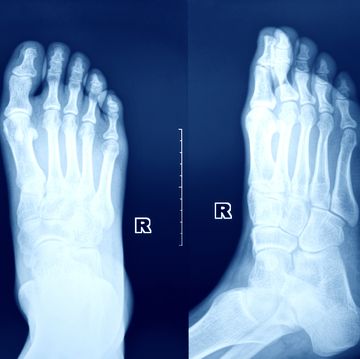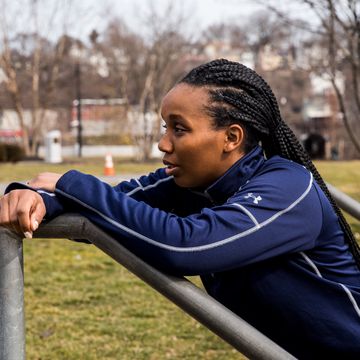Running up and down hills amid some of Britain’s most remote and rugged terrain might seem the preserve of hardy, veteran athletes, but in reality, anyone with a reasonable level of fitness can enjoy the exhilarating experience of fell running.
What is fell running?
Fell running, a traditionally British sport, is running and racing off road, where a significant gradient is climbed. It's not so much about speed, but you'll have to train yourself for the unpredictable weather and terrain you might experience underfoot. Fell running also involves running between two checkpoints, often without a clear path. This is the main difference between fell running and mountain running - mountain runners are often faster, with more obvious paths to follow.
Why is it called fell running?
The sport grew out of the English fells in northern Britain around the Lake District. In this region the word fell means hill or mountain so the term fell running is strongly associated with this area. As a result fell running is particular to England rather than Wales, Scotland or Ireland, where it is usually called hill running.
Is fell running the same as trail running?
Both these events take place off road on a variety of terrain, but there are subtle differences. Trail running is usually on well used paths, known as trails. In trail races the route is often indicated with arrows, markers or tape (although not always) whilst fell running often relies on participants navigating on upland or moorland without any paths. And whilst you're likely to get seriously muddy doing both, trail races can have low elevation whilst fell running always involves a lot of climbing.
Is fell running good for you?
You'll get a great cardiovascular workout from fell running particularly since they are traditionally steep runs. It is also a fantastic way to develop co-ordination skills, improve balance and strengthen your core. Although large sections may be running downhill, which may seem easy, the tricky terrain means you are constantly engaging a range of muscles. It can also be an exhilarating experience which has enormous mental health benefits as well as developing cognitive skills such as navigation and map reading.
How hard is fell running?
Much as you’ll need to practise powering up the hills, negotiating the descents can be equally difficult to master. Coming down steep slopes can be unnerving, especially if the ground feels unstable underfoot. Make sure you watch where you place your feet and try leaning into the descent – this might go against your natural reflexes, but will actually reduce the strain placed on your muscles. Strengthening your ankles and quadriceps through cross-training (cycling or hill-walking for example) and leg-specific exercises can also help reduce your risk of injury and soreness.
How's best to get started as a fell runner?
Teaming up with other runners is the best way to dip your toe in if you’re completely new to off-road running. The Fell Runners Association website has links to clubs across the country – contact a local group for a network of people ready to take you under their wing and offer advice.
Next, prepare to leave all expectations behind, as it will take time to adjust to running over rough grass, rocky paths, up sheer hillside tracks and over streams, boulders and stiles. Certainly don’t expect your road times to translate on the fells – you may even find yourself walking in places as you get used to the new terrain. Try not to get too frustrated – stick with it and you’ll quickly notice improvements.
How do you work out where to run when you're fell running?
Stick to well-marked trails while you’re finding your feet. If you’re not sure where to start, chat to local fell runners or browse the FRA forums for route suggestions. Once you feel comfortable, consider brushing up your navigational skills. Being able to read maps and take compass bearings will not only open up endless new training routes for you, it’ll broaden your racing options too.
What to wear when fell running?
A good pair of fell shoes will be your most important piece of kit - everyday road shoes simply won’t cut it on the rough terrain and sheer slopes, especially in wet conditions. Look for models that sport a lower heel (reducing the risk of turning an ankle), have large studs on the sole (adding grip) and a snug-fitting upper. Walsh and Inov-8 are two of the most popular brands. We've summed up the best trail running shoes for 2022 here.
How to stay safe when fell running:
Heading out in a group will minimise the risks associated with running in exposed, mountainous areas, but can detract from the sense of adventure. Here are a few tips to bear in mind if you’re heading out solo:
1. Weather conditions can change quickly, so always take waterproof layers, a hat and gloves with you.
2. Stow a map, compass, whistle and emergency food rations in your backpack (or bum bag) too. A lightweight bivi bag and basic first aid supplies can also be useful.
3. Plan your route in advance (including possible cutbacks) and let someone know where and how long you will be.
4. Run conservatively to avoid sustaining an injury.
5. Memorise features as you pass them to make locating yourself on a map as easy as possible.
6. Above all, always err on the side of caution: it’s all too easy to be seduced by your surroundings, and find yourself in trouble minutes later.
Are there fell running races to take part in?
Fell races take place almost every weekend across the UK (take a peek at the FRA website for full listings) and cost just a few pounds to enter. Don’t be put off by the small number of runners attending – most events cater to a full mix of abilities.
Fixtures are graded by both severity and length, so try to be realistic about your ability when choosing a race. Find out whether the route will be way-marked too – if in doubt, check with the organiser beforehand.
Many events will also have mandatory kit regulations. Arrive prepared to have the contents of your rucksack checked before the start - if you don’t meet essential equipment requirements, you will be penalised.
Fell races are graded according to both their difficulty and distance covered:
A Category – averaging no less than 250ft for every mile of climb, and no more than 20% of total distance on road
B Category – averaging no less than 125ft for every mile of climb, and no more than 30% of total distance on road
C Category – averaging no less than 100ft for every mile of climb, and no more than 40% of total distance on road
Short (S) Under six miles (9.6K) in length.
Medium (M) Between six and 12 miles (19.3K) in length.
Long (L) More than 12 miles in length.
Thus, a race listed as "AM" will be steep but of medium length. Most fixtures will also include a reference to their total distance and elevation –3m/400’ refers to a three-mile race climbing 400ft for example.
Other common abbreviations in the FRA race listings include NS (navigation skills required), LK (local knowledge an advantage) and ER (experience required).
Remember: if in doubt, contact the organiser beforehand.
